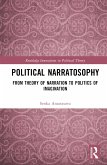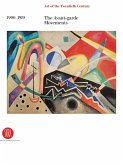This book addresses late-Soviet and post-Soviet art in Armenia in the context of the turbulent social, political and cultural transformations that occurred from the late 1980s to the early 2000s. It provides the first English-language study on contemporary art in Armenia, exploring the emergence of contemporary art from within and in opposition to the practices, aesthetics and institutions of Socialist Realism and National Modernism. The book presents the argument that art best captures the historical and social contradictions of the period of the so-called 'transition,' especially if one considers 'transition' from the perspective of the former Soviet republics that have been consistently marginalised in Russian- and East European-dominated post-Socialist studies. Within the chronological scope of this work, contemporary art in Armenia encapsulated the difficult dilemmas of autonomy and social participation, innovation and tradition, progressive political ethos and national identification, the problems of communication with the world outside of Armenia's borders, dreams of subjective freedom and the imperative to find an identity in the new circumstances following the collapse of the Soviet Union. This historical study outlines the politics (liberal democracy), aesthetics (autonomous art secured by the gesture of the individual artist) and ethics (ideals of absolute freedom and radical individualism) of contemporary art in Armenia. Through the historical investigation, a theory of post-Soviet art historiography is developed, one that is based on a dialectic of rupture and continuity in relation to the Soviet past. The book will be of prime interest for artists, scholars, curators and critics interested in post-Soviet art and culture and in global art historiography.








